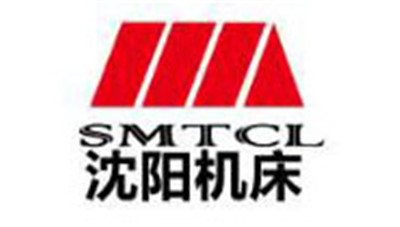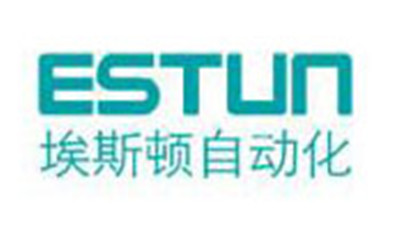How to Optimize Power Distribution with Phase Shifter Transformers
Table of Contents
- Understanding the Basics of Phase Shifter Transformers in Power Distribution
- Identifying Key Benefits of Using Phase Shifter Transformers
- Techniques for Efficient Installation of Phase Shifter Transformers
- Best Practices for Maintenance and Monitoring of Phase Shifter Transformers
- Integrating Phase Shifter Transformers with Existing Power Grid Systems
- Analyzing Case Studies of Successful Power Optimization with Phase Shifters
- Exploring the Advantages and Applications of High Frequency Encapsulated Transformer XPKG13158 in Modern Electronics
- FAQS
- Conclusion
- Related Posts
You know, as the power distribution landscape keeps changing, using Phase Shifter Transformers has really become a game-changer. They’re pretty much key to making sure energy flows smoothly and the whole grid stays stable. I recently read that the global market for advanced power transformers is expected to hit around $30 billion by 2025. That’s mainly because there's a growing push for more reliable energy management systems.

Take Dezhou Xinping Electronics, for example—they’ve been around since 2001, and they’re a high-tech company specializing in precision electronic transformers, including those cool new Phase Shifter Transformers. These devices are super important for reducing power congestion and boosting transmission efficiency, which is especially helpful when integrating renewable energy sources into the grid.
Honestly, as the energy sector faces all these challenges around keeping things reliable and efficient, focusing on innovative solutions like these transformers is definitely the way forward for the future of power distribution.
Understanding the Basics of Phase Shifter Transformers in Power Distribution
Phase shifter transformers are really important parts when it comes to making power distribution run smoothly. Basically, they help control how power flows between transmission lines, which is a big deal for avoiding congestion and keeping the grid stable. To get the gist of how these transformers work, you just need to understand that they handle the phase angle between input and output voltages — this affects both the direction and amount of power being transmitted. By tweaking these settings, utility companies can better balance the load and make the whole electrical system more efficient.
At Dezhou Xinping Electronics Co., Ltd., we’re all about designing and manufacturing high-precision electronic transformers, including phase shifter transformers. We’ve been around since March 2001, and over the years, our focus on innovation and quality has really helped us stand out in the industry. Our goal is to meet the changing needs of modern power networks. Thanks to our expertise and cutting-edge technology, we’re able to produce products that not only boost grid performance but also help make energy systems more reliable and sustainable. We’re passionate about supporting the worldwide effort to optimize power distribution, and we’re committed to pushing the boundaries of what's possible in this field.
Power Distribution Optimization with Phase Shifter Transformers
Identifying Key Benefits of Using Phase Shifter Transformers
 Phase shifter transformers, or PSTs for short, are pretty important when it comes to making power distribution systems work better. They really help keep things stable and efficient. One of the coolest things about PSTs is how they can dynamically control the flow of power. Basically, by tweaking the phase angle of the voltage, they let operators reroute electricity from overloaded lines to ones that still have some capacity. This is super handy, especially when demand is high, because it can help prevent blackouts or equipment overloads.
Phase shifter transformers, or PSTs for short, are pretty important when it comes to making power distribution systems work better. They really help keep things stable and efficient. One of the coolest things about PSTs is how they can dynamically control the flow of power. Basically, by tweaking the phase angle of the voltage, they let operators reroute electricity from overloaded lines to ones that still have some capacity. This is super handy, especially when demand is high, because it can help prevent blackouts or equipment overloads.
Another big plus? PSTs are great for keeping voltage levels steady. Fluctuations in voltage can be a real pain—damaging equipment or making the grid less efficient. But with PSTs, precise control over phase shifts helps keep the voltage consistent across the network, protecting sensitive gear and improving overall system reliability. Plus, installing these transformers can save a bunch of money since they reduce the need for extra infrastructure. For utility companies, that’s definitely a win—they get better performance without breaking the bank on huge investments.
Techniques for Efficient Installation of Phase Shifter Transformers
When it comes to boosting power distribution systems, installing phase shifter transformers—or PSTs—really makes a big difference. They help control voltage levels more efficiently and manage how the power flows through the network, which can seriously cut down on transmission losses. In fact, industry reports suggest that these losses can sometimes be over 10% in older or conventional setups. To get the most out of PSTs, it's important to install them properly, and there are a few tricks to doing that right.
First off, picking the right site is a game-changer. The best spots are usually those that keep the connection lengths short, which helps reduce losses overall. Also, placing PSTs closer to load centers means better voltage regulation and less loss further down the line. IEA studies show that smart deployment of these transformers can actually boost system efficiency by up to 15%—not too shabby!
**Quick tips:** Always do a thorough load analysis before installation to make sure the transformer specs match what your system needs. It’s also super helpful to work with experienced engineers during planning—you’ll avoid headaches with integration and make sure everything complies with regulations.
And don’t forget, keeping the system flexible is key. By designing with future adjustments in mind, you’re set for changing demand patterns down the road. Using advanced monitoring tools can give you real-time insights into how your system’s performing, so you can step in quickly if something needs fixing. According to a recent EPRI report, regularly checking transformer health can actually extend their lifespan by about 20%, plus boost reliability—that’s a win for keeping power running smoothly and efficiently.
How to Optimize Power Distribution with Phase Shifter Transformers
| Technique | Benefits | Installation Considerations | Efficiency Improvement (%) |
|---|---|---|---|
| Optimal Sizing | Reduces losses, enhances load management | Requires advanced load forecasting | 10%-15% |
| Phase Shift Optimization | Improved voltage regulation | Requires precise phase shift calculations | 8%-12% |
| Load Balancing | Enhances system stability | Needs active monitoring and adjustments | 5%-10% |
| Regular Maintenance | Increases operational lifespan | Requires scheduling and resource allocation | Up to 20% |
Best Practices for Maintenance and Monitoring of Phase Shifter Transformers
When it comes to power distribution,
phase shifter transformers
are pretty much essential. They help control how electricity flows and keep the
grid running smoothly. But to get the best out of them, regular check-ups
and monitoring are a must. Doing this kind of routine maintenance can spot potential
problems before they turn into big issues, which means the system stays more reliable
and efficient overall.
A good starting point is setting up a regular inspection schedule. This
means looking for any physical signs of wear and tear, keeping an eye on temperature
levels and load conditions, and checking that connections aren’t getting corroded. On
top of that, it's really helpful to run diagnostic tests
often—these give you a clear picture of how the transformers are working and can catch
any oddities early on.
Here's a tip: consider using advanced monitoring tech like online condition monitoring systems.
They let you track performance in real-time, which is a total game-changer. Being proactive
like this can cut down on downtime and save on maintenance costs. Also, keeping detailed
records and having clear protocols for fixing issues can make your maintenance process
run a lot smoother, boosting the overall reliability of the system. Basically, if you foster
a culture of continuous monitoring and
preventative care, you’ll extend the lifespan of your
transformers and keep everything running hassle-free.
Integrating Phase Shifter Transformers with Existing Power Grid Systems
Adding phase shifter transformers into existing power grids can be a pretty smart move when it comes to improving how we distribute electricity. These gadgets are key for managing the differences in phase angles, which means they can really boost the stability and efficiency of delivering power. Basically, they give us more control over where the electricity flows—so we can send more energy to places that are struggling with high demand, while cutting down on wasted losses in parts of the grid that aren't really busy.
To get these transformers up and running smoothly, you’ve gotta take a good look at what the current grid looks like—things like the existing transmission lines, how the loads are spread out, and where renewable energy sources fit in. Working closely with utility crews and system operators is crucial to come up with a tailored game plan that tackles the specific quirks of each system. Plus, using advanced data analytics and real-time monitoring helps keep everything running smoothly, letting operators tweak settings on the fly so the power distribution stays flexible and resilient. All in all, it’s about making the grid smarter and more adaptable.
Analyzing Case Studies of Successful Power Optimization with Phase Shifters
You know, phase-shifter transformers have really become a game-changer when it comes to improving how we distribute power in today's electrical grids. Basically, they work by tweaking the phase angle between the input and output voltages, which gives utilities a smarter way to control how power flows and even helps cut down on congestion along transmission lines. Looking at some real-world examples, it's clear just how much of a difference these devices can make — they’ve led to better performance and even saved costs.

Take this one utility company, for instance. They decided to deploy phase-shifter transformers at key points in their network to tackle some pretty serious bottlenecks. By placing them strategically at crucial junctions, they managed to reroute power from overloaded lines to ones that weren’t being used as much. The result? Transmission losses dropped by about 15%, and overall reliability shot up — proof that phase shifters can truly transform the power grid’s efficiency.
Then there’s a renewable energy project where these transformers helped smoothly bring in wind and solar power, which can be pretty unpredictable. They effectively distributed the power and kept everything steady, even when generation levels fluctuated. All in all, these examples really highlight just how vital phase-shifter transformers are in modern energy management — they’re changing the game, for sure.
Exploring the Advantages and Applications of High Frequency Encapsulated Transformer XPKG13158 in Modern Electronics
The advent of high-frequency encapsulated transformers, such as the XPKG13158, has significantly transformed modern electronics. These advanced transformers integrate the benefits of high-frequency operation with encapsulation, yielding a compact form factor coupled with outstanding sealing performance. This makes XPKG13158 particularly suited for applications in rugged and humid environments where conventional transformers may fail. According to a recent market report by ResearchAndMarkets, the demand for encapsulated transformers is expected to grow by 13% annually, highlighting their increasing relevance in electronic designs that prioritize durability and reliability.
Moreover, the customization capabilities of high-frequency encapsulated transformers are a key advantage that sets them apart in the industry. As manufacturers strive to meet stringent specifications for various applications, the ability to tailor designs according to specific customer requirements becomes crucial. Companies in sectors such as telecommunications, medical devices, and consumer electronics are increasingly seeking such solutions to maximize efficiency and performance. The XPKG13158 not only addresses these needs but also provides OEM services that further enhance design flexibility. By collaborating directly with customers, manufacturers can ensure that the transformers meet exact operational requirements and environmental standards.
High-frequency encapsulated transformers like the XPKG13158 thus represent a pivotal advancement in the field of electronics, combining size efficiency, environmental resilience, and customization. As the market continues to evolve, these transformers are poised to be integral components in the next generation of electronic devices, driving innovation and performance across multiple industries.
FAQS
: Phase shifter transformers (PSTs) are essential components in optimizing power distribution systems. They regulate power flow between transmission lines, help mitigate congestion, and enhance grid stability by controlling the phase angle between input and output voltages.
PSTs improve network stability by dynamically managing power flows and redirecting electricity from congested lines to those with available capacity. This is particularly beneficial during high-demand periods, which helps prevent overloads and reduces the risk of outages.
PSTs contribute to voltage regulation by allowing precise control over phase shifts, which helps maintain consistent voltage levels across the network. This reduces the risk of equipment damage caused by voltage fluctuations and enhances the reliability of power distribution systems.
By optimizing power flow and reducing the need for additional infrastructure, PSTs can result in significant cost savings for utility companies. They provide an efficient solution to improve performance without requiring extensive capital investment.
Best practices include implementing a routine inspection schedule, monitoring temperature and load conditions, and performing regular diagnostic tests. These actions help identify potential issues early, improving reliability and efficiency.
Online condition monitoring systems can be used to track performance metrics in real-time. This proactive approach helps reduce downtime and maintenance costs, ensuring optimal operation of phase shifter transformers.
Proper documentation helps establish clear protocols for addressing identified issues and streamlines the maintenance process. It fosters a culture of continuous monitoring and preventive maintenance, ultimately enhancing overall system reliability.
Dezhou Xinping Electronics Co., Ltd. was established in March 2001, specializing in the design and production of high-precision electronic transformers, including phase shifter transformers.
The company utilizes advanced technology and industry knowledge to manufacture products that enhance grid performance and contribute to the reliability and sustainability of energy systems.
Regular diagnostic testing evaluates the functionality of transformers and identifies any anomalies, helping to ensure optimal performance and the longevity of these critical components in power distribution systems.
Conclusion
So, I recently read this article titled "How to Optimize Power Distribution with Phase Shifter Transformers," and I gotta say, it does a pretty good job breaking down the essentials of these transformers and why they’re such a big deal in power systems. It starts off by explaining how phase shifter transformers actually work—kind of like how they can control and tweak the flow of electricity to keep everything running smoothly. From there, it dives into the main perks of using these transformers, like boosting overall efficiency and cutting down on power losses during transmission. Honestly, those are pretty big wins in the energy world.
The article also gives some handy tips on how to install these transformers properly and stresses how important regular maintenance and monitoring are—because if you don’t keep an eye on them, things can go sideways. It even talks about how to seamlessly integrate these into existing power grids, which is super useful. Plus, there are a few real-world case studies showing how companies achieved real results and optimized their power distribution thanks to phase shifter transformers. All in all, it’s a solid resource—especially for companies like Dezhou Xinping Electronics, who've got their sights set on making precision electronic transformers to help improve energy management and distribution. It’s engaging and packed with insights, making what could be super technical a lot easier to get into.”
Related Posts
-

The Future of Innovative Applications in Aluminium Coil Technology
-

Understanding the Versatility of 10kva Transformer Applications in Various Industries
-

10 Essential Insights for Sourcing the Best Distribution Transformer Worldwide
-

How to Choose the Right Dry Transformer for Your Industrial Needs
-

Ultimate Checklist for Selecting the Best Air Core Inductor for Your Projects
-

How to Select the Right Capacitor Voltage Transformer for Your Needs
Blog Tags:


















